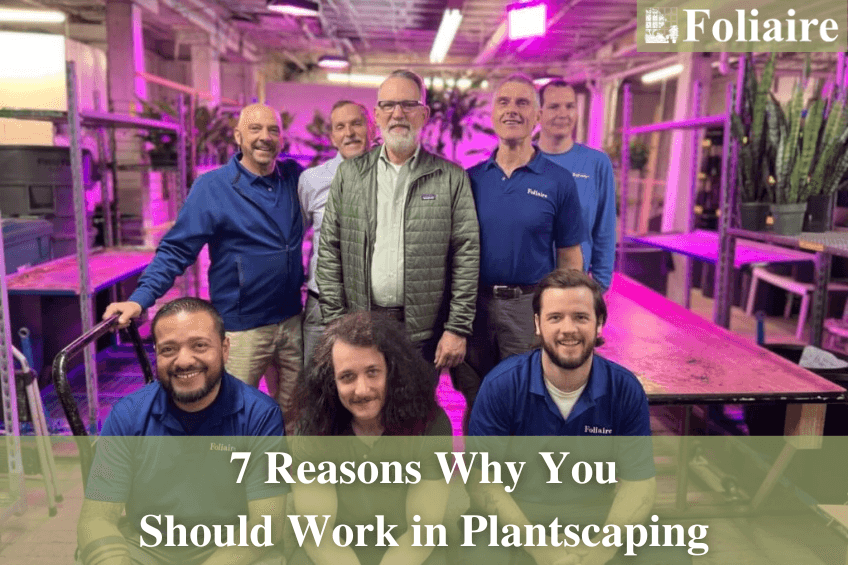How to Attract Butterflies to Your Garden
For many, a garden is incomplete if you can’t attract butterflies. These wonderful pollinators can enhance your garden’s health, adding vibrant and unique movement to your landscape. However, their delicate nature requires an ideal environment for thriving and reproducing. There are important do’s and don’ts when creating a haven for butterflies. Today, we will discuss factors that you can change to attract butterflies to your garden and guide you in creating the perfect ecosystem for them.
We will cover:
- Preparing your greenspace for butterflies
- Conducting proper research
- Selecting the correct plants
- Establishing an ecosystem
- Key takeaways
Why Aren’t There Butterflies in Your Garden Already?
Before we begin creating a beautiful space to attract butterflies, it’s important to ensure there are no factors deterring them. First, ensure sufficient light in your garden, as butterflies thrive in sunny areas. Find a spot that receives ample sunlight throughout the day, which is crucial for the flowering plants providing nectar. Second, create a water source. Butterflies need a safe place to hydrate. A shallow water source with a perch will keep butterflies hydrated on hot summer days. Thirdly, provide sufficient shelter with shrubs or bushes. Butterflies require a safe haven from predators and harsh weather to protect their delicate wings. Finally, and most importantly, avoid using chemicals. Pesticides may harm these beautiful creatures. Opt for organic gardening and landscaping practices to protect both yourself and butterflies from harmful synthetic chemicals.
Conduct Research Before Creating Your Garden
Research native butterflies in your area. This will help you understand their reproduction cycles and the plants that attract them, providing insight into the wonderful creatures residing in your environment. Studying native plants is essential for selecting the right ones to include in your garden. Look for flowering plants and shrubbery, as choosing native plants attracts corresponding native butterflies.
How to Choose the Right Plants
Numerous common plants attract butterflies. Milkweed, for instance, is a common plant that draws many butterflies. It offers a safe spot for laying eggs and provides caterpillars with an ideal environment to develop into butterflies. The plant also flowers, providing nectar for butterflies and completing a continuous circle of life. Generally, purple flowering plants are an excellent choices, such as lavender, purple coneflower, butterfly bush, and thyme. Researching native plants reveals the amazing options available for your space.
Create Your Ecosystem
Once you’ve eliminated deterrents, researched native butterflies and plants, and chosen suitable plants, it’s time to plan your garden layout greenscape. Consider a water feature with small perches, tall grasses with scattered flowers, or an organic wildflower garden with natural ponds. With a well-thought-out plan, you can create the perfect haven for butterflies, fostering generations of these delightful creatures.
Key Takeaways
Welcoming butterflies to your garden requires adequate light, shelter, and water. Minimize pesticide use to protect them from harmful chemicals. Selecting the right plants supports their natural lifecycle. By dedicating care and attention to detail, you can develop a rewarding relationship with butterflies. These pollinators will enhance your garden’s growth and provide a captivating sight. Attracting butterflies demands research and planning, requiring time and patience. The end result is a stunning landscape with graceful butterflies fluttering about.
About Foliaire
Foliaire is a full-service interior and exterior greenscape design-build firm in Boston’s historic South End. For the last 40 years, we’ve provided the highest quality plantscaping service for clients all across the Boston Metro area. We customize and plan all of our installations to fit your unique space and tastes. That’s how we’ve built a reputation of unparalleled style and elegance for both corporate and residential community projects. In addition, we’ve received several environmental design awards and have appeared in several publications, including Architectural Digest, House and Garden, Horticulture, and Interiorscape. Follow us on social media to learn more:
- Instagram – @foliaire.inc
- Facebook – FoliaireInc
- Twitter – @foliaire
- LinkedIn – Foliaire-inc












